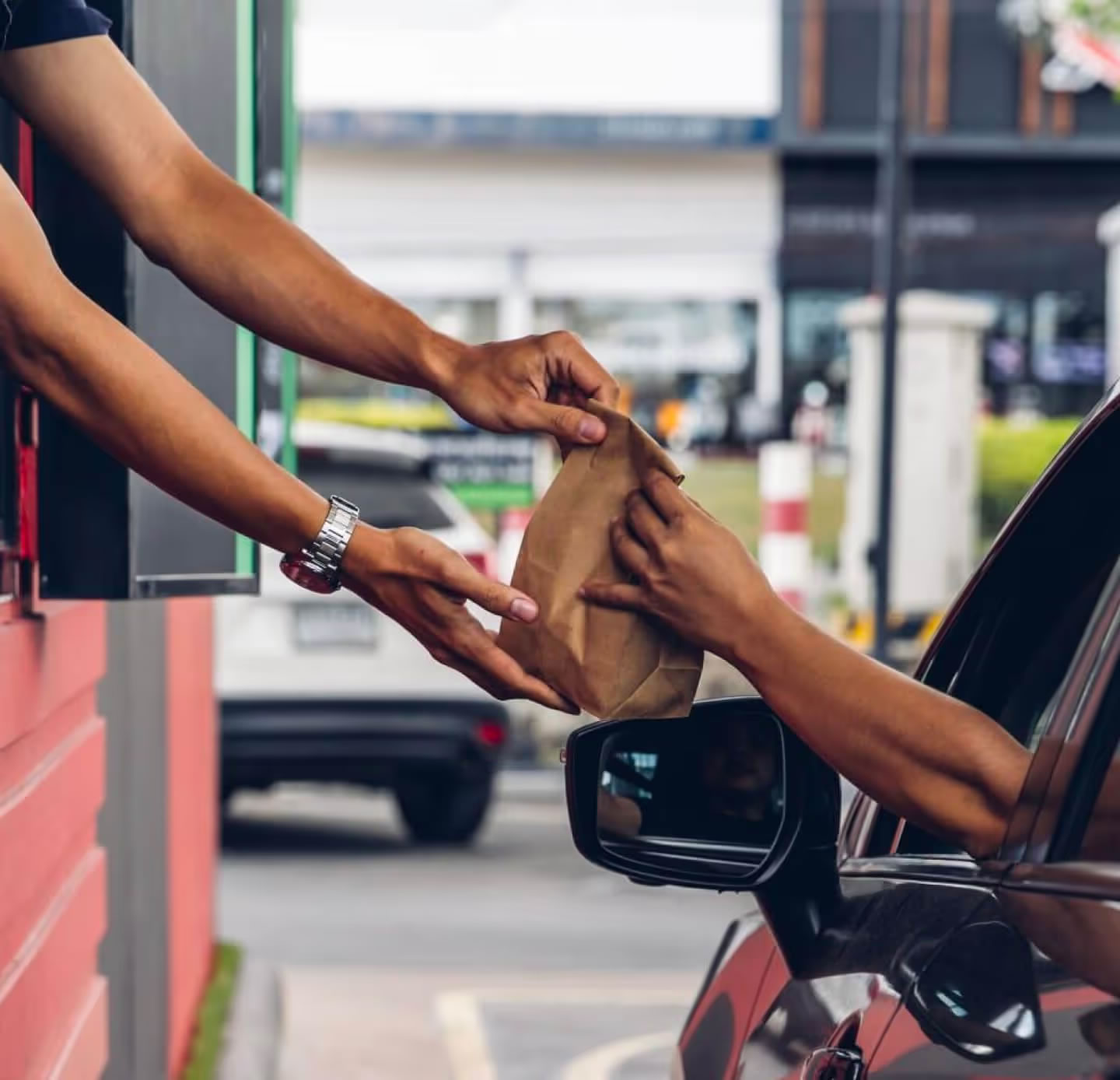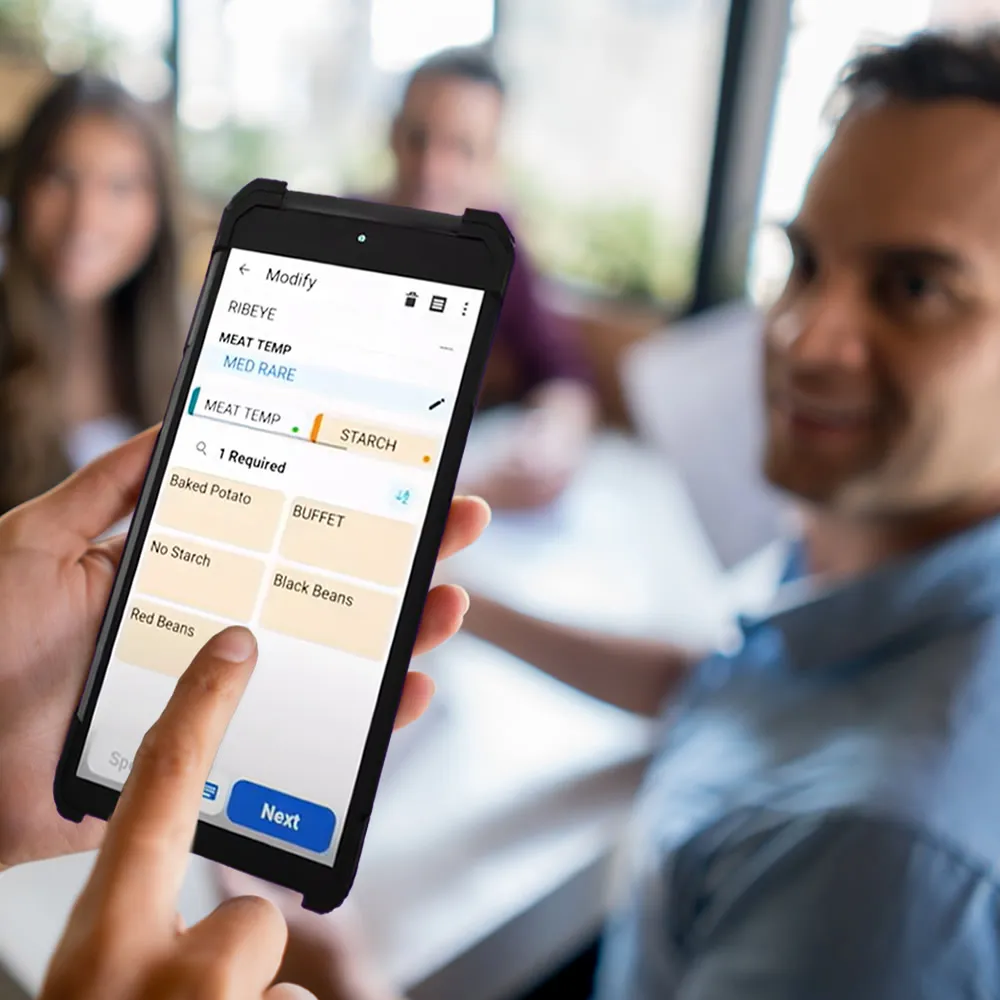Drive-thrus have been a staple for quick service restaurants for decades. In fact, the first true drive-thru restaurant was built in 1947 on Route 66, although several other restaurant brands claim the title as well. Although the drive-thru experience has certainly evolved since then, the foundational goals remain the same: increase speed of service and deliver a convenient experience for your guests.
In the past few years, we’ve seen drive-thru traffic increase by 10-20% for many high-volume QSRs. As consumers become more and more tech savvy, restaurant brands are looking for ways to enhance the drive-thru experience. But the challenges for the industry remain: how do you improve the experience without disrupting it for the consumer while also adding valuable pieces of technology? How do you leave an impression with a customer when the goal remains to get them thru the line and on their way quickly? How do you maintain a level of personalization without slowing down the line?
Whether you are actively thinking of ways to update your drive-thru service, or you haven’t started yet, here are a few ideas to consider to enhance the experience while still focusing on your two core objectives: speed of service and guest convenience.
Strategically think of the flow of traffic
For many brands who have seen a big uptick in drive-thru traffic, this directly impacts your parking lot. You may have significantly more cars on the property, creating grid lock within the lot for parked guests or maybe even the main roads surrounding your locations. Here are three ways to alleviate disrupted flow of traffic:
1. Transition your drive-thru to a multi-lane format. This could be a Y-lane, or even a double lane if you have the space. Brands like Checker’s Rally’s and McDonald’s have developed footprints to manage the length of the line by maximizing side-by-side space.
2. Leverage signs and cones to direct flow of traffic. If you have multiple entrances, use cones or posts to communicate lanes or flow direction. You can also install signage to direct traffic such as pick-up, dine-in and drive-thru to certain areas of your lots.
3. Utilize line busting and handhelds. Place your staff outside to take orders when the cars pull up. Learn from Chick-fil-A in what they’ve termed “face-to-face ordering.” This form of line busting includes one team member walking the line to take orders while another comes to take payments. This allows cars to move twice as fast as the traditional speaker box method. Similarly, handhelds are also great to use to increase the speed of service. They get orders in faster and ultimately fulfilled faster too. Handhelds are a great technology to implement line busting for the drive-thru and you can leverage them in other ways like in-store or for managers. Here’s six reasons handhelds are great for your business.
Keep speed at the forefront of every drive-thru enhancement
There are different types of drive-thru users: those who are happy with ordering while in the line and those who prefer to order ahead and pick up in the drive-thru window. Digital ordering has accelerated the drive-thru experience and more guests are adopting this stream of ordering. For the guests who order ahead, they don’t want to risk getting stuck behind cars who may still need to order. If you have a large mobile order customer base, consider a designated lane for those guests. This could be a double lane with one dedicated to drive-thru ordering and the other dedicated to mobile orders only. Or maybe you have staff positioned to mark order ahead customers and have them pull up to a different section of the lot. You could also consider curbside pick-ups for all mobile orders to alleviate traffic for both groups and have dedicated staff managing getting those orders out to these guests. Wendy’s uncovered their new idea called Global Next Gen which includes a dedicated drive-thru window that serves only delivery drivers and is connected to a special kitchen to boost efficiency. Similarly, Chick-fil-A has been rolling out an express drive-thru lane where guests order ahead, find the express lane, scan a QR code, and pick up their food without waiting in the normal line.
Leverage AI and machine learning intelligence for the drive-thru
With continued innovation in the restaurant space as it relates to AI, we’re seeing opportunity to infuse machine learning and intelligence into drive-thru technologies. This could be automated order taking, beacon technology, visualization, etc. Examples of this could be a license plate recognition program that knows your previous orders or geo-locators that can track your location in relation to the restaurant’s proximity and send offers to your mobile phone.
Think about environmentally sustainable options
Another trend in the drive-thru space is becoming more environmentally sustainable. After smog cleared and wildlife reappeared during the early months of the COVID-19 pandemic, people tangibly saw how their activities negatively affect the globe. Restaurant operators, and many others, started to put action behind their thoughts of building a more sustainable experience. We all know that cars idling in drive-thru lanes can release greenhouse gas which has a direct impact our ozone. Cars that are built with “stop-start” systems cut fuel and eliminate idle emissions. The U.S. Department of Energy estimated that eliminating idling would be the same as taking 5 million vehicles off the roads. There’s an ongoing debate over whether drive-thru can be fully green or not. Some say they can be sustainable in “every way except the one that matters most — greenhouse gas emissions” which is the most important because idling cars emit such high levels of emissions. By increasing speed of operations and focusing on moving guests through lines efficiently, you can decrease the amount of time idling for cars. Make sure you don’t use sustainability as a buzz word without real action to back it up. People care more about truth and honesty when it comes to the environment.
Shifting your fast casual brand to fast pick-up
Fast casual restaurants have typically been counter service. Even if they had digital or online ordering, it was primarily for in-store pick-up. Particularly due to the pandemic, these brands are seeing the increase in demand for drive-thru pick-up lanes. Therefore, we’re seeing the shift to include drive-thru operations into the design plans and continued investment in the technology and infrastructure to implement drive-thru service. Brands such as Chipotle use a drive-thru lane for mobile order pick-ups only, while brands like Panera Bread have implemented both order pick-up and order at the window methods.
But even while all these ideas are ones to consider, it’s important to introduce the right technology to support your operational model. When making investments in technology, brands are looking to get 7-10 years out of the equipment so you should also consider the services attached to any investment. Consider a partner who provides professional services, deployment services and preventative maintenance to ensure you are maximizing your spend and getting the best out of your investment.



